And Then There Were Walls
NOTE: As of September 23, 2009, this post has been edited in
accordance with a court-mediated settlement. The names of the
contractor and his excavation subcontractor have been replaced with
pseudonyms.
The day began bright and early once again, with a minor drama when it was discovered that on Friday, Hertz had come and added another lock to the container in the yard (where we'd been letting Counterforce store their tools) because apparently Contractor A (the red-faced guy who showed up drunk on the job site) hasn't properly transferred the contract to us.
That resolved, Counterforce got to work on preparing for the shotcrete walls in the basement. I'd thought that they had another day of prep in front of them, because there was so much I knew needed to be done, but they solved that by throwing people into the basement. In no time, plastic tarps and the plywood from the driveway were laid out on the floor, the keyways were all cleaned up, and waterstop installed.
The other task they finished up was adding rebar to connect the basement to the front part of the foundation (which is around a 4' tall crawlspace), and rebar to make the cantilever slab under the dining room bay window.
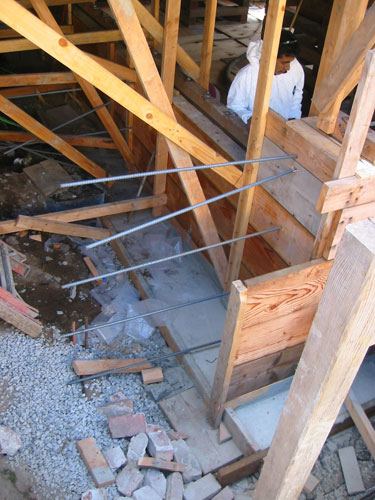
The cantilever slab is about four feet up from the floor, and will basically make a storage shelf, rather than anything useful like a window nook.
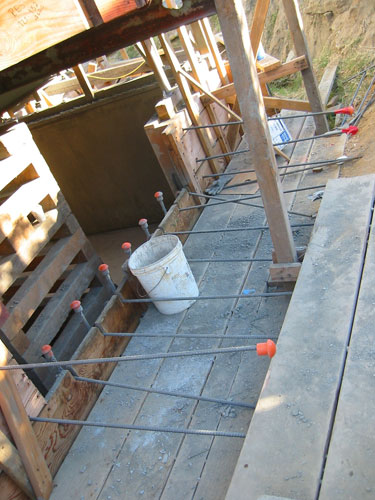
The shotcrete went in with three hoses: one for the concrete, which is a very stiff mixture so it will stay in the walls without a board holding it in place. The red hose is to add air to the concrete to propel it, and the yellow hose is used to blast the surface clean before the concrete is blown at it.
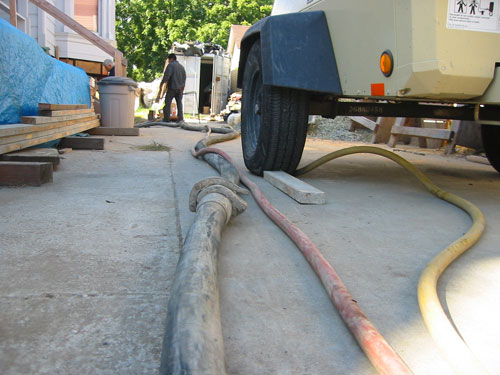
The process is a tad messy. One guy goes ahead blasting the wall clean, while the next guy follows, spraying this stiff, dry concrete mixture into the formwork.
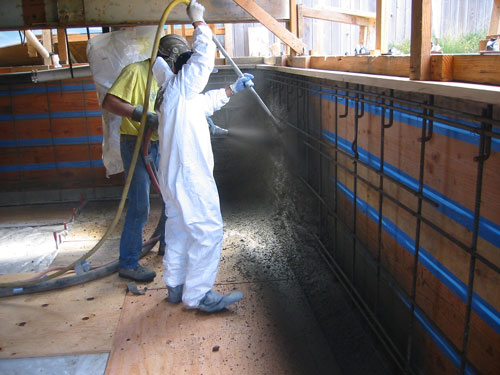
They build up the surface of the wall, so not too much concrete is added at once and the whole thing doesn't collapse.
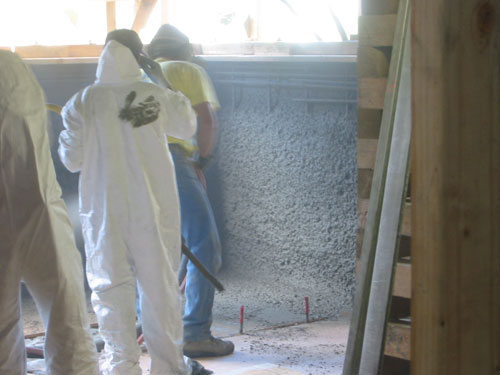
And a lot of concrete gets on the floor and shoots over the wall -- this is not a tidy procedure.
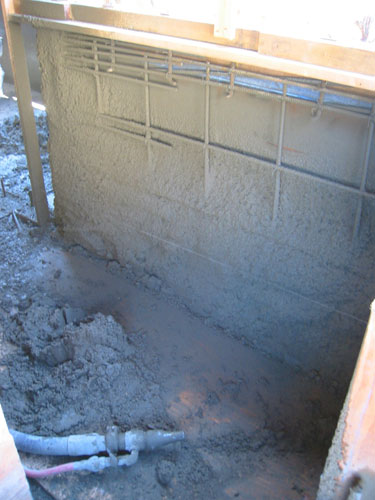
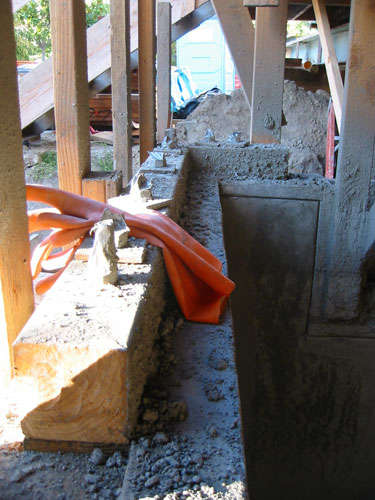
Following behind are some guys with trowels and screeds, bringing the surface of the wall back to the level of the forms and guides, and smoothing the surface. This is where you see the real skills come out -- making concrete smooth and flat like that is a real craft, learned over years of practise.
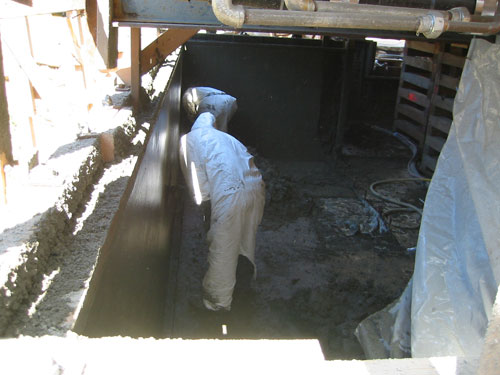
After the walls are done, you have to shovel the excess concrete off the floor and clean out the hoses, and guess where it went? That's right, the pile is a bit weirder now.
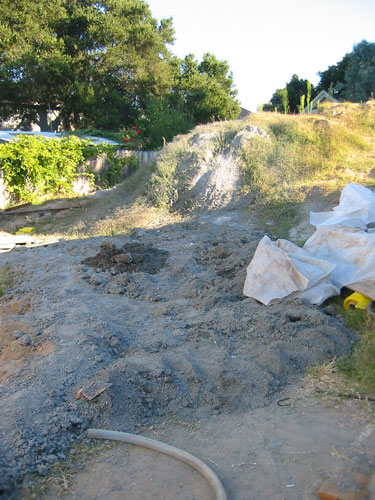
But now we have the most beautiful basement walls in the world.
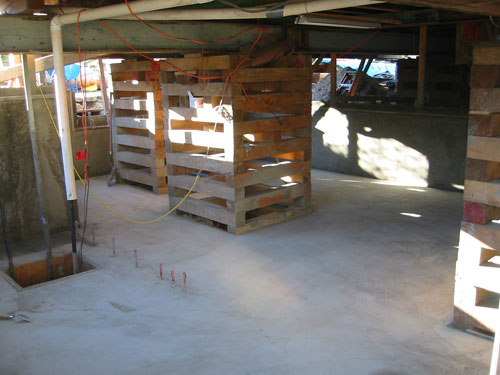
It really looks like a room down there.
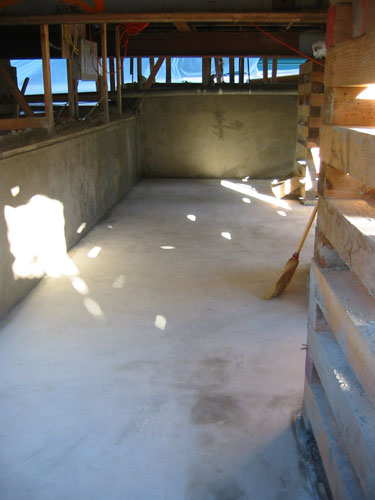
Now that we have two foundation cams, you can see the walls going up by the sump AND along the center shear wall, where you can see the guys tying in rebar like crazy before the shotcrete hose gets around to that side.
posted by ayse on 08/22/05